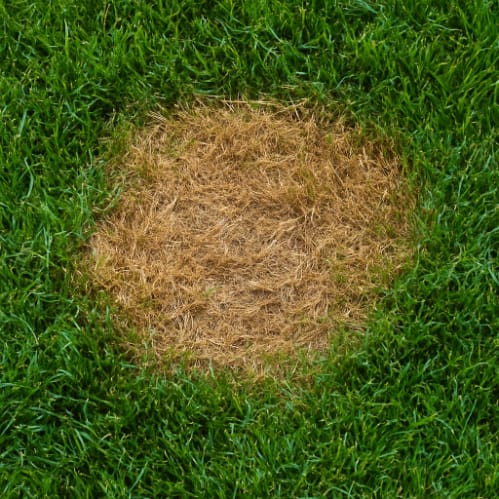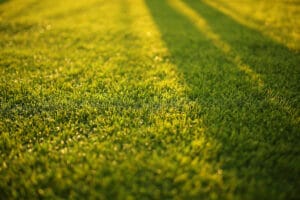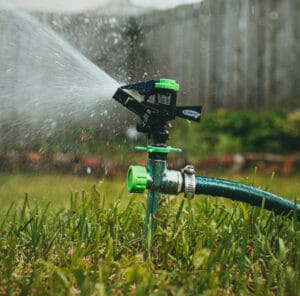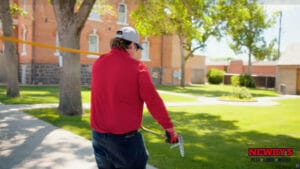How to Spot, Treat, and Prevent Them
Your lawn shouldn’t look tired, thin, or sickly—but if it does, lawn disease might be to blame. Here in Southern Utah, we’ve got a mix of extreme temperatures, clay-heavy soils, and sporadic rain that create perfect conditions for lawn fungus and other turf problems to sneak in.
At Newby’s Pest and Lawn, we help homeowners from Cedar City to St. George understand what’s happening under their feet—and what to do about it. Here’s how to spot common lawn diseases, what causes them, and how to protect your property all year round.
What Causes Lawn Disease in Southern Utah?
Lawn diseases are usually caused by fungi that are already in your soil. They activate when the conditions are just right—usually a combination of:
- Overwatering or poor drainage
- High humidity and warm nighttime temps
- Compacted soil with poor airflow
- Mowing too low or with dull blades
- Excess nitrogen or heavy thatch
- Stress from drought, cold, or foot traffic
Once they get going, they spread fast—and can turn a green lawn into patchy trouble.
Common Lawn Diseases in Southern Utah (With Causes + When They Show Up)
1. Brown Patch
- Season: Summer (especially July–September)
- Signs: Circular patches of brown grass with a darker edge (like a donut ring)
- Caused by: High humidity, poor air circulation, and over-fertilizing with nitrogen
- Often in: Tall fescue and ryegrass lawns
2. Dollar Spot
- Season: Late spring to early fall
- Signs: Bleached spots the size of a silver dollar that may join into larger patches
- Caused by: Low nitrogen, dry soil during the day, and excess dew or moisture overnight
- Often in: Bentgrass, Kentucky bluegrass
3. Rust Fungus
- Season: Late summer into fall
- Signs: Reddish-orange dust on grass blades (you’ll see it on shoes or mower)
- Caused by: Slow-growing grass, low nitrogen, and too much shade
- Often in: Bluegrass and ryegrass
4. Necrotic Ring Spot
- Season: Spring and fall
- Signs: Rings of dead grass with a green center (“frog-eye” pattern)
- Caused by: Cool weather stress, poor root systems, compacted soil
- Often in: Kentucky bluegrass
5. Snow Mold
- Season: Early spring (after snow melts)
- Signs: Pale, matted spots of gray or pink grass that don’t bounce back
- Caused by: Snow sitting on moist grass that wasn’t mowed or cleaned up before winter
- Often in: Cool-season grasses, especially in higher elevations
6. Powdery Mildew
- Season: Spring and fall
- Signs: White, powder-like film on grass blades, often in shady areas
- Caused by: Poor airflow, heavy shade, and overwatering in cool weather
- Often in: Kentucky bluegrass in shaded lawns
How to Prevent Lawn Disease in Southern Utah
At Newby’s, we take a proactive approach. Here’s what we recommend to keep your grass healthy:
- Water early in the morning (before 8am)
- Avoid daily watering—aim for 2–3 deep soakings per week
- Aerate your soil to reduce compaction and increase oxygen
- Mow high and keep blades sharp
- Apply balanced fertilizer—not too much nitrogen
- Clean up leaves and thatch, especially before winter
Healthy grass fights disease better—so a little prevention goes a long way.
What If My Lawn Already Has a Disease?
Don’t panic—and definitely don’t over-fertilize or spray something random. That can make it worse.
Here’s how we help:
- Correct identification of the disease (no guesswork)
- Targeted treatment plans that are safe for kids, pets, and property
- Lawn health restoration, including soil improvement and follow-up care
- Optional weed control services to stop other invaders from moving in
FAQ: Lawn Disease in Southern Utah
Q: What’s the most common lawn disease in our area?
A: Brown patch and necrotic ring spot are both common in tall fescue and bluegrass—two of the most popular grasses in Southern Utah.
Q: Can I fix lawn fungus without chemicals?
A: Sometimes! Good mowing, watering, and aeration habits can reverse early stages. But advanced fungus often needs a professional touch.
Q: Is lawn disease contagious to other yards?
A: Fungal spores can travel by mower, shoes, wind, or water—so yes, it can spread if untreated.
Q: Can too much fertilizer cause lawn problems?
A: Absolutely. Over-fertilizing, especially with nitrogen, can trigger diseases like brown patch.
Q: Will weed control help with lawn disease?
A: Yes! Thick, healthy grass resists both weeds and disease. Our weed control service helps strengthen your lawn’s defense system.
Let’s Get Your Lawn Back on Track
If your grass is thinning, browning, or just not bouncing back, we’re here to help. At Newby’s, we offer expert lawn diagnosis, disease treatment, and seasonal care that fits the unique needs of Southern Utah.
Need answers fast? Schedule a visit online today—it’s quick, easy, and we’ll take it from there.






